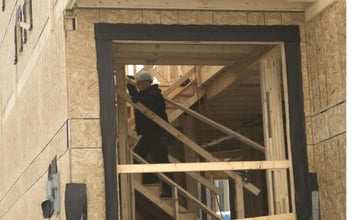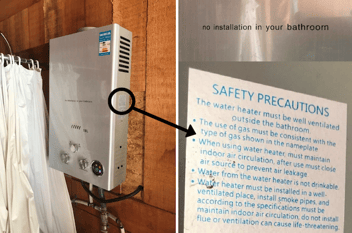As demand for electric vehicle (EV) charging grows in condos and strata buildings, many councils and homeowners are exploring how to safely and legally support this shift. But EV charger installations aren’t just a matter of plugging in. They require planning, permitting, and importantly, a dedicated electrical circuit.
Without the right electrical setup, including a properly installed dedicated circuit, EV chargers can overload systems, create fire hazards, and compromise building safety. Here's what you need to know before approving or installing EV charging in a multi-unit building.
Why a Dedicated Circuit is Required
EV chargers draw a significant amount of power, far more than most household appliances. That’s why they must be installed on a dedicated circuit, which means a single breaker and wiring path used only for the charger.
Sharing a circuit with other devices can lead to:
- Tripped breakers or inconsistent charging
- Overheating wires
- Increased risk of fire or damage to electrical systems
- Dedicated circuits reduce these risks and are required by BC Electrical Code.
Code Compliance and Permit Requirements
EV charger installations are considered regulated electrical work. That means:
- You need an electrical installation permit for most charger installations.
- A licensed contractor must perform the work. Homeowner electrical permits are only available for fully detached dwellings, not for condos or multi-family buildings.
- The installation must meet the BC Electrical Code (or your local code), including proper breaker sizing, wiring, and safe load capacity.
Work that doesn’t meet these requirements could void insurance, pose liability issues, or be flagged during resale or inspections, and may also create a serious safety hazard.
Permit Applications in Multi-Unit Buildings
In strata or condo environments, electrical loads are shared and complex. Before installing any chargers, a contractor or Field Safety Representative (FSR) must complete a load calculation to ensure the building can safely support the added demand.
Permit applications for multi-family dwellings must include:
- A full load assessment of individual units and common areas
- Load calculations based on Section 8 of the BC Electrical Code
- Submission through a licensed contractor (with review by a professional engineer if required)
Once submitted, the calculation is reviewed by an electrical safety officer as part of the permitting process. Energy measurement data supplied by the utility may be useful to support alternative means of calculating the augmented load after installation when supported by engineering.
Understanding EV Charger Types
EV chargers have different power requirements, and some may not be suitable for older or lower-capacity buildings without upgrades.
- Level 1 Charger: Uses a 120V outlet (slow charging, typically 12–20 hours)
- Level 2 Charger: Uses a 240V outlet (more common, 6–14 hours charging time)
- Level 3 Charger (DC fast-charging): Uses direct current and is typically found in commercial settings, not condos
All Level 2 and 3 chargers require a dedicated circuit, and a dedicated circuit is highly recommended for Level 1 chargers.
EV Management Systems and Load Control
In some cases where service and/or feeder upgrades aren’t feasible, an Electric Vehicle Energy Management System (EVEMS) may help. These systems manage the flow of electricity to multiple chargers, helping to avoid overloading the system by cycling or throttling power.
EVEMS must still meet code, and any installation must be reviewed during the permit process to ensure the setup is safe and compliant.
When an Electrical Operating Permit Applies
If your building already has an electrical operating permit, you may not need a separate installation permit to perform an EV charging installation, but only in limited cases.
Even with an operating permit in place, you will need an installation permit if the EV charger installation:
- Increases the connected load by more than 12.5 kVA, for systems under 250 kVA
- Increases the connected load by more than 36 kVA, for systems over 250 kVA
If installing chargers pushes the connected load over the 250 kVA threshold, an electrical operating permit may also be required.
Protecting the Building and Your Budget
Proper permitting and dedicated circuits not only keep the building safe, they can also save money. Rebates from programs like BC Hydro, FortisBC, and CleanBC often require proof of a valid permit. That means unpermitted work could disqualify owners or the strata from thousands of dollars in potential funding.
Key Questions for Condo and Strata Boards
Before moving forward, boards should ask:
- Do we have enough electrical capacity for multiple chargers?
- Will we allow one-off installations or build shared charging infrastructure?
- Who pays for upgrades, the individual owner or the strata?
- Are we setting policies to manage charger access and power limits?
- Are we requiring all EV installations to be permitted and done by licensed contractors?
EV chargers can be a great amenity, but they require careful planning and the right electrical infrastructure. Dedicated circuits are not optional; they’re essential for safety and compliance.
Strata and condo boards that take the time to assess capacity, set clear policies, and ensure permitted installations are protecting both their residents and their property for the long term.

.jpg)


